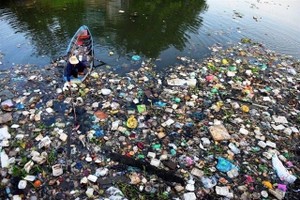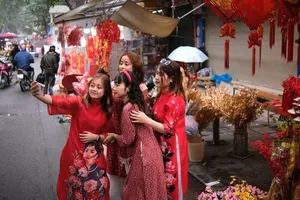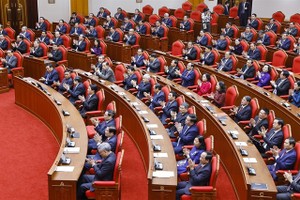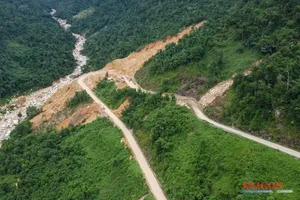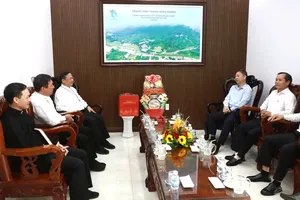
Thanh Hoa province, renowned for its picturesque landscapes, has witnessed a dramatically negative transformation over recent decades. Once majestic, the mountains are now scarred by human intervention.
The Vuc Mountain range (sited in Dong Quang Commune of Dong Son District), a once-beloved landmark for nearby villages, is now a desolate quarry. Local resident Dam Toan recalls the days when Vuc Mountain was a source of sustenance and spiritual solace for the community.
From National Highway 1A bypassing Thanh Hoa City, it is not hard to observe the "mutilated" landscape of Vuc Mountain. Approaching the mountain's base, numerous deep cavities have been excavated by machines for stone extraction, with several major peaks decapitated.
Dam Toan (a resident of Village 1, Dong Quang commune) reminisces wistfully that Vuc Mountain was once considered the area's “natural bonsai”. The mountain not only sheltered the locals from storms but also sustained them, producing fruits and tubers that helped villagers survive numerous famines. The mountain valley used to be like a fairy tale world with forests interspersed with rocks and birdsong.
“Certainly, exploitation erodes mountains, but this rate is too devastating. In just about 20 years of, the mountains have been destroyed,” lamented Toan sadly.
Similarly, Dun Mountain is integral to the cultural and historical landscape of Ha Long Commune (Ha Trung District in Thanh Hoa Province). The recent discovery of a stunning 70-meter-long cave within the mountain underscores the ecological and historical significance of these landscapes, along with ancient ceramic household items. The mountain is also linked to national heritages.
Therefore, it is rather confusing when the site is approved for mineral extraction for construction since 2017. Deputy Head Vu Dinh Sy of the Cultural Heritage Management Division (under the Thanh Hoa Province Department of Culture, Sports and Tourism) signed with regret for the ancestral heritage that can never be recovered due to this relentless exploitation.
In Nghe An Province, the Nam Ton River, once a pristine waterway, is now polluted by the runoff from nearby mines. Local communities have witnessed the devastating impact of these activities on their environment and livelihoods.
In Quang Binh Province, the mountains of Len Bang and Len Thanh Thuy, integral to local folklore and history, have been destroyed by mining operations. The elderly residents of Tien Hoa Commune lament the loss of these natural majestic landmarks.
In Binh Dinh Province, the Tay Son region, known for its rich history, is facing similar challenges. Mountains like Chop Vang and Heo, once revered as it carries the legacy of the powerful and smart God Lia, are now scarred by quarrying and construction activities.
In Lam Dong Province, known for its flower farms, the “whirlwind” of terrain modification for agricultural production, especially agriculture using greenhouse technology, is creating countless pressures on scenic spots and mountains in the “land of thousand flowers”. This development demand has created opportunities for unbridled manipulation of heaven-given landscapes.
From National Highway 27C, the trails lead to agricultural production areas of residents in the Bai Say area (Da Sar Commune). Unlike the peaceful daytime scenery, at night Bai Say Mountain becomes “a battlefield” for those leveling and excavating hill and mountain soil to expand ground surfaces. Because authorities are tightening control, ill-intention people hire excavators to work secretly at night, dispersing at any disturbance.
Along the coastlines of Binh Dinh and Khanh Hoa provinces, coastal mountains and peninsulas have been degraded by tourism development, mining, and other human activities. The iconic Chin Khuc Mountain in Nha Trang City, for instance, has been severely damaged by unregulated development.
In addressing violations, the Khanh Hoa Province People's Committee decided to reclaim over 380 of 513.53ha of land that some former provincial leaders had previously signed to “sell mountains” to businesses. This reclaimed area is designated for regeneration, protection, and forest environment restoration.

